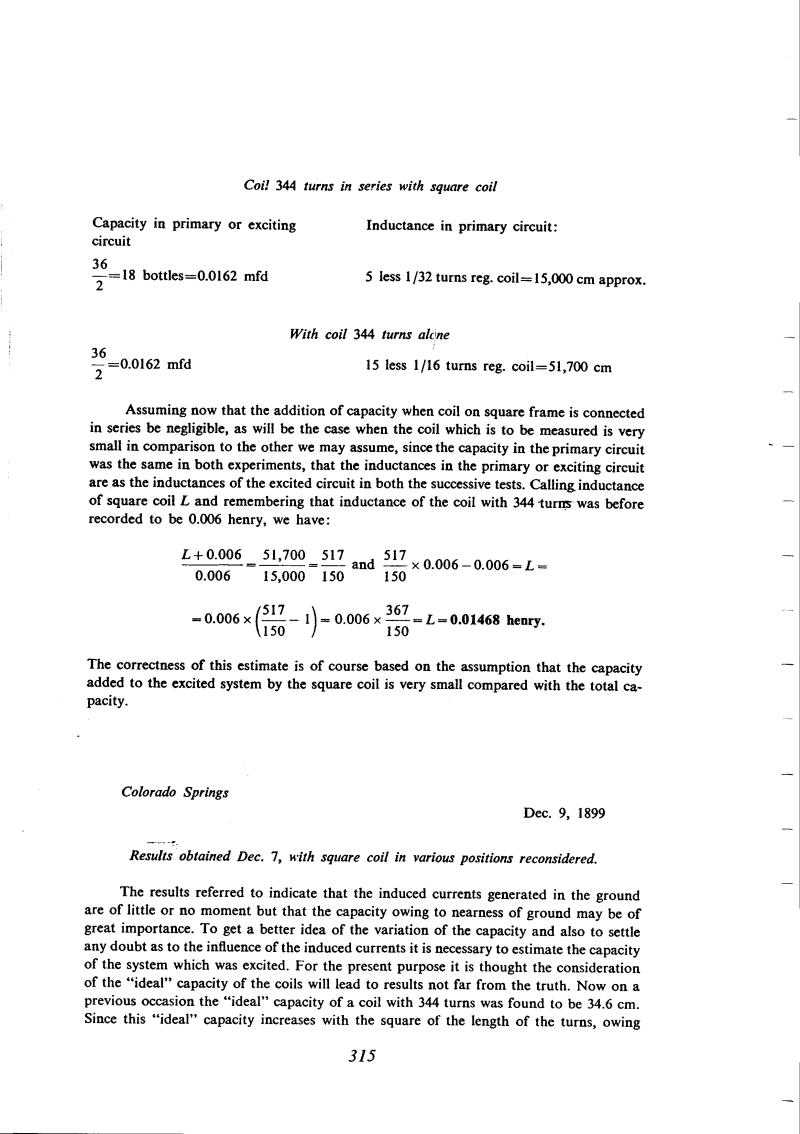
Nikola Tesla Books
| Coil 344 turns in series with square coil | |
| Capacity in primary or exciting circuit | Inductance in primary circuit: |
| $! {36 \over 2} $! = 18 bottles = 0.0162 mfd | 5 less 1/32 turns reg. coil = 15,000 cm approx. |
| With coil 344 turns alone | |
| $! {36 \over 2} $! = 0.0162 mfd | 15 less 1/16 turns reg. coil = 51,700 cm |
Assuming now that the addition of capacity when coil on square frame is connected in series be negligible, as will be the case when the coil which is to be measured is very small in comparison to the other we may assume, since the capacity in the primary circuit was the same in both experiments, that the inductances in the primary or exciting circuit are as the inductances of the excited circuit in both the successive tests. Calling inductance of square coil L and remembering that inductance of the coil with 344 turns was before recorded to be 0.006 henry, we have:
$! {{L + 0.006} \over 0.006} $! = $! {51,700 \over 15,000} $! = $! {517 \over 150} $! and {$! {517 \over 150} $! x 0.006 - 0.006 = L =
= 0.006 x $! {\left({{517 \over 150} - 1}\right)} $! = 0.006 x $! {367 \over 150} $! = L = 0.01468 henry.
The correctness of this estimate is of course based on the assumption that the capacity added to the excited system by the square coil is very small compared with the total capacity.
Colorado Springs
Dec. 9, 1899
Results obtained Dec. 7, with square coil in various positions reconsidered.
The results referred to indicate that the induced currents generated in the ground are of little or no moment but that the capacity owing to nearness of ground may be of great importance. To get a better idea of the variation of the capacity and also to settle any doubt as to the influence of the induced currents it is necessary to estimate the capacity of the system which was excited. For the present purpose it is thought the consideration of the âidealâ capacity of the coils will lead to results not far from the truth. Now on a previous occasion the âidealâ capacity of a coil with 344 turns was found to be 34.6 cm. Since this âidealâ capacity increases with the square of the length of the turns, owing
315

